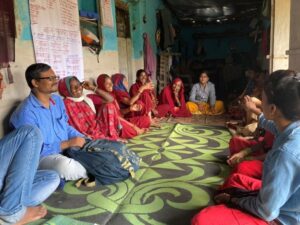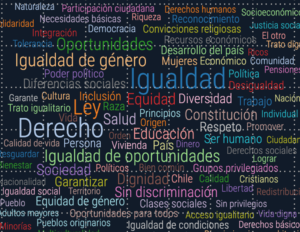Note: This is the second blog of a six-part blog series
Women in the world
1. It was Mother’s Day yesterday, which provides us an important opportunity to think about the staggering numbers for black infant and maternal mortality rates in the United States.
Not only is there structural violence, racism, and poverty – but evidence strongly suggests that “weathering” over time – “a kind of toxic stress triggered the premature deterioration of the bodies of African-American women as a consequence of repeated exposure to a climate of discrimination and insults” – leads to lower birth weights of black babies in America or other life-threatening complications for mother and baby. A case-in-point of the black mother’s experience with the healthcare system is underlined in Serena Williams’ own story of seriously lacking postpartum healthcare.
2.What happens when investments targeting women’s microbusinesses go to men? As someone who has worked on a project doing just this before, this paper and the ideas being explored in it hit home.
Several studies find that male-operated – but not female-operated – microenterprises benefit from access to grants or loans. But these analyses overlook that female entrepreneurs often reside with a male business owner. Using data from randomized trials in India, Sri Lanka and Ghana, this paper finds that household-level income gains are equivalent regardless of the grant or loan recipient’s gender. Low average returns of female-run enterprises reflects the fact that women’s capital is typically invested into their husband’s enterprise.
This particular data point is one I find to be extremely important, and often not thought about, or not emphasized, in program design. It is also a clear example of the kinds of practicalities on the ground that academics or high-level policymakers can overlook, which may be obvious to anyone who lives and works in a community every day. (It’s something that I started to notice right away when doing fieldwork, contrasted with the fact that in design discussions, farmer cooperative loans or kirana store microbusiness loans targeted to households with a member of a women’s self-help group were just assumed to positively impact the woman’s quality of life in every program planning document and discussion). The study linked to here actually goes beyond that, talking about even loans specifically given to female entrepreneurs
What these existing studies have overlooked is that female entrepreneurs often reside with husbands and fathers-in-law who may run their own microbusinesses. So when a female micro-entrepreneur gains access to a grant or loan, she may choose to invest in a household business that is not the one she owns.
So, Bernhardt et al take another look at the data, with this norm in mind, and find something different –
In a recent paper (Bernhardt et al. 2017), we look at female micro-entrepreneurs’ returns to grants and loans through the lens of household-level – and not individual-level – investment decisions. We re-examine data from previous studies in India, Ghana, and Sri Lanka, which experimentally varies access to grants or loans in order to estimate entrepreneurs’ returns to capital. We find that returns for a female-owned microenterprise are higher when you take into account all household investment opportunities available to her.
This is important because it sheds doubt on a key assumption embedded in many a program design (certainly ones that I have been privy to designed and implemented by governments and multilaterals in India)…
Our findings call into question any perception that women are innately less entrepreneurial than men.[…]A woman is as capable of running a business as a man – this is evident in our finding that when a woman’s business is the only one in the household, it responds to capital investment in the same way as a man’s. Our findings shed light on what kind of business support will and won’t work. Programmes that aim to improve women’s business skills have shown limited success. Given the dynamics we have uncovered such training is unlikely to have a significant impact on women’s level of profits when there are male enterprise owners in the house.
…and INTRA-HOUSEHOLD DYNAMICS MATTER!
Our results also raise important questions about within-household dynamics and women’s investment choices. In households with several businesses, why do women micro-entrepreneurs hand over their capital to their spouses or other male household members? And what factors influence a household’s decision to open one or multiple enterprises? Households might open several businesses as a means of diversifying their investments, and women’s decisions to invest their loans in other businesses may then be profit-maximising for the household. Alternatively, it may be that women’s own enterprises are high-return, but their capital is directed to other household businesses because they lack control over it. If we identify the prevalent channels, we may begin closing the gender gap in microenterprise returns.
3. A new dimension to the gender-profit gap: demand-side constraints. This new working paper by Hardy and Kagy shows that “female tailors in Ghana earn less than male tailors because they are constrained to making womens’ clothes, a sector where there is more competition and lower prices.” As pointed out in the faiV, this adds a new dimension to the information that we have on the gender-wage gap – “the intriguing thing here is not ‘women vs men entrepreneurs’ but ‘maybe the industries women are concentrated in aren’t less profitable after all.”‘
4. India Needs more Women Business Correspondent Agents.
5. Economics Professor Claudia Goldin and Soumaya Keyenes discuss being a woman in the field of economics. They talk about the reasons there may be be less women in economics grad schools and then in faculty departments, what is being represented in economics textbooks and whether that is gendered, potential things to do to increase these percentages, and projections for whether the gender composition of economics departments will ever be equal.
If what individuals think about, and work on, and are more clever about and more creative, is housed differently by gender – for some reason and we’re not quite certain why – then if we have too few of one group, we’re going to have too little of what part of knowledge. And since we want there to be the best knowledge – we want it to grow and flower and propagate – then if we cut one part off, if we somehow don’t nurture it, then we’re going to get an imbalance in how knowledge is created and how knowledge is diffused.
6. And this all makes me think back to this critique by Rafia Zakaria on how we think about women’s empowerment. She talks about some of the perverse assumptions and incentives in the funder/donor industry, and speaks out against thinking about women’s empowerment as a depoliticized issue. Some poignant phrases:
The assumption behind all of these donations is the same: Women’s empowerment is an economic issue, one that can be separated from politics.
In this system there is little room for the complexities of the recipients.
Numbers never lie, but they do omit.
When non-Western women already have strong political identities, their removal is sometimes required even if it involves pushing them back into the very roles from which empowerment was meant to deliver them.
It is within these complexities in narrative and identity, economics and politics and societies, that IMAGO tries to work. And so – talking about trying to understand complexity…
Stories about storytelling
7. The pitfalls of pitting aid vs. development, funder incentives, and the power of storytelling and music therapy. This poignant podcast episode called The Congo We Listen To from Rough Translation (NPR) is both devastating and touching. It’s a difficult one to listen to on rape in the Congo, but also about poverty, trust, the aid industry, and the power of music therapy and storytelling.
If you stick through to the end, you will find a beautiful couple of vignettes about music therapy and the power of telling and owning your story for victims of violent crimes – from Panzi hospital, a research hospital in eastern Congo. It’s all the more poignant after the set of complex situations around the nexus of reporting rape, funders/aid industry, and poverty in the Congo that the podcast discusses. Listen to it on a long car-ride – it’s about 40 minutes.
8. The life-and-death pros and cons of UN-backed reality TV in Somalia. This excellent podcast episode called The Other Real World from Invisibilia (NPR) gives more food for thought on the power of storytelling in a very fraught situation – both the moral and ethical quandaries faced by those who are trying to encourage it in a fragile state, and the potential for empowerment and personal expression for those who have lived their entire lives under repressive and terrorizing rule-and-punishment systems.
It makes me think a lot about how stories and music and art may have especially high impact in some of the most difficult situations and societies, but those are the very situations that often make it hard to introduce storytelling. Is there a middle way? If not, is it worth the risks?
Reality TV may be popular around the world, but it’s also roundly mocked as formulaic and contrived. So, can that kind of fragile fantasy world meaningfully influence reality? We look at the goals and impact of a UN-backed reality show called “Inspire Somalia,” that attempted to model democracy and freedom in a country racked by decades of clan warfare and oppression by extremist groups like al-Shabab.









